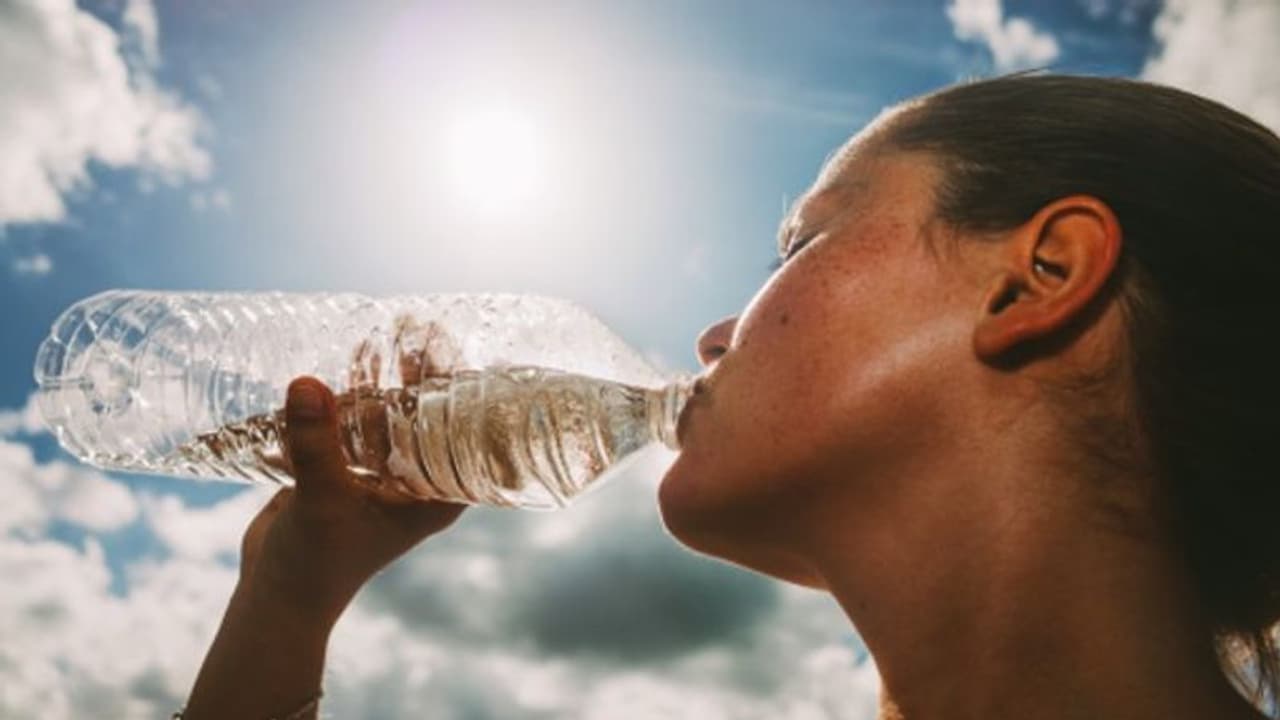Published in the journal Proceedings of the National Academy of Sciences, the peer-reviewed study is the first to examine bottled water for "nanoplastics" - plastic particles measuring less than 1 micrometer, or one-seventieth the width of a human hair.
A recent study has revealed that an average one-litre (33-ounce) bottle of water contains approximately 240,000 plastic fragments, challenging previous estimates and raising concerns about the potential health impact of plastic pollution. Published in the journal Proceedings of the National Academy of Sciences, the peer-reviewed study is the first to examine bottled water for "nanoplastics" - plastic particles measuring less than 1 micrometer, or one-seventieth the width of a human hair. This discovery suggests that the presence of plastic particles in bottled water may be up to 100 times higher than previously thought, as earlier studies only considered larger microplastics, ranging from 1 to 5,000 micrometers.

Nanoplastics present a heightened risk to human health compared to microplastics due to their ability to infiltrate human cells, enter the bloodstream, and potentially affect organs. Additionally, these tiny particles can traverse the placenta, reaching the bodies of unborn babies. Despite suspicions about the existence of nanoplastics in bottled water, previous limitations in technology hindered their individual identification.
To address this challenge, the co-authors of the study devised a novel microscopy technique, developed a data-driven algorithm, and utilized both to examine approximately 25 one-litre bottles of water from three popular US brands (which were not disclosed by the researchers). The analysis unveiled the presence of 110,000 to 370,000 minuscule plastic particles per litre, with 90% of them identified as nanoplastics.
The lead author of the study, Naixin Qian, a graduate student in chemistry at Columbia University, expresses that the research provides a robust tool to tackle the challenges associated with analyzing nanoplastics. This tool holds the potential to fill the existing knowledge gap regarding plastic pollution at the nano level.
Beizhan Yan, an environmental chemist at Columbia University and co-author of the study, emphasizes the significance of the findings by stating, "Previously this was just a dark area, uncharted. Toxicity studies were just guessing what's in there." Yan notes that the study opens a window for researchers to delve into a previously undiscovered world, shedding light on aspects that were not exposed before.
The researchers focused on seven prevalent plastic types, including polyethylene terephthalate (PET), commonly used in water bottles, and polyamide, often employed in water purification filters. However, they also encountered numerous unidentified nanoparticles in the water. If these unidentified particles are confirmed as nanoplastics, the prevalence of plastic in bottled water could be even higher.
With global plastic production exceeding 450 million tons annually, a substantial portion ends up in landfills. Most plastics do not naturally degrade but instead break down into smaller pieces over time. Additionally, tiny plastic fragments are regularly released from products containing plastic, such as synthetic fabrics.
While plastic pollution is widespread, scientists are particularly concerned about bottled water due to its potential to introduce plastic particles into the human body. A 2022 study revealed higher concentrations of microplastics in bottled water compared to tap water. A 2021 report warned that simply opening and closing the cap on a plastic water bottle could release small plastic particles into the liquid.
The study's co-authors emphasize that their research extends beyond bottled water. They plan to investigate nanoplastics in tap water and snow samples collected from western Antarctica, acknowledging the vast realm of nanoplastics that requires exploration. Wei Min, a biophysicist at Columbia University and co-author, notes, "The smaller things are, the more easily they can get inside us."
